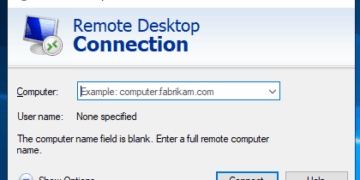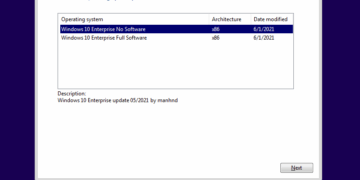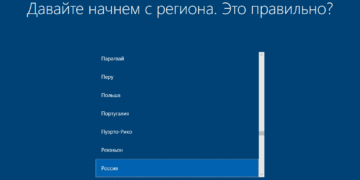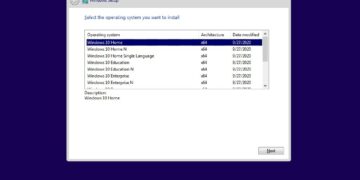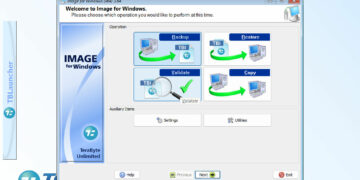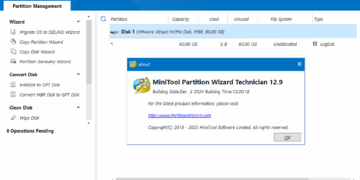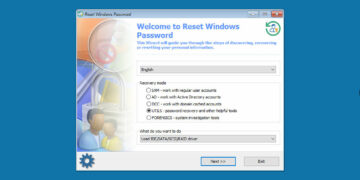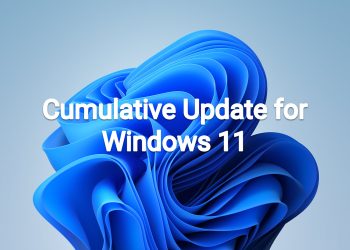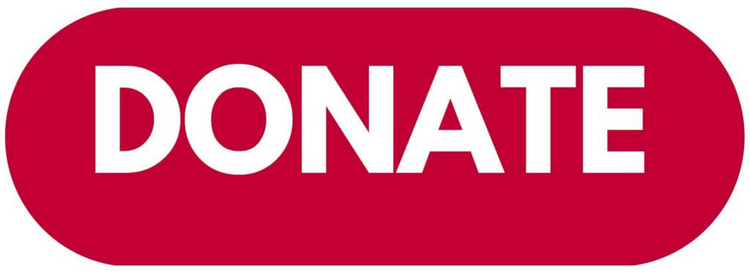Highlights
- New! It enhances search visual treatments on the taskbar to improve discoverability. This is available to a small audience initially and deploys more broadly in the months that follow. Some devices might notice different visual treatments as we gather feedback. To learn more about why you might be seeing these changes, see Search for anything, anywhere.
- New! It enhances the backup experience when using your Microsoft Account (MSA). Some devices might notice visual treatments for this enhancement. This is available to a small audience initially and deploys more broadly in the months that follow.
- New! It adds improvements to the Microsoft Account experience in Settings. For instance, you can manage your Microsoft OneDrive subscription and related storage alerts.
- New! It adds Task Manager to the context menu when you right-click the taskbar. This feature rolls out in the coming weeks.
- It addresses an issue that affects Microsoft Edge when it is in IE Mode. The titles of pop-up windows and tabs are wrong.
- It addresses an issue that might cause vertical and horizontal line artifacts to appear on the screen.
- It addresses an issue in that stops the credential UI from displaying in IE mode when you use Microsoft Edge.
- It addresses an issue that might fail to sync the audio when you record game play using the Xbox Game Bar.
- It addresses an issue that affects File Explorer. It is less dependable when you browse for Microsoft OneDrive folders.
- It addresses an issue that affects the Start menu. It stops working when you use keyboard commands to move pinned items to a folder at the end of a list.
- It stops the start of daylight saving time in Jordan at the end of October 2022. The Jordan time zone will permanently shift to the UTC + 3 time zone.
Improvements
This non-security update includes quality improvements. When you install this KB:
- New! It adds improvements to the Microsoft Account experience in Settings. For instance, you can manage your Microsoft OneDrive subscription and related storage alerts.
- New! It enhances search visual treatments on the taskbar to improve discoverability. This is available to a small audience initially and deploys more broadly in the months that follow. Some devices might notice different visual treatments as we gather feedback. To learn more about why you might be seeing these changes, see Search for anything, anywhere.
- New! It enhances the backup experience when using your Microsoft Account (MSA). Some devices might notice visual treatments for this enhancement. This is available to a small audience initially and deploys more broadly in the months that follow.
- New! It adds Task Manager to the context menu when you right-click the taskbar. This feature rolls out in the coming weeks.
- It enables the ms-appinstaller Uniform Resource Identifier (URI) to work for the DesktopAppInstaller.
- It stops the start of daylight saving time in Jordan at the end of October 2022. The Jordan time zone will permanently shift to the UTC + 3 time zone.
- It addresses an issue that affects Distributed Component Object Model (DCOM) authentication hardening. It automatically raises the authentication level for all non-anonymous activation requests from DCOM clients to RPC_C_AUTHN_LEVEL_PKT_INTEGRITY. This occurs if the authentication level is below Packet Integrity.
- It addresses an issue that affects the Windows Search service. Indexing progress is slow when you use the service.
- It addresses an issue that affects cached credentials for security keys and Fast Identity Online 2.0 (FIDO2) authentications. On hybrid domain-joined devices, the system removes these cached credentials.
- It addresses an issue that might affect some types of Secure Sockets Layer (SSL) and Transport Layer Security (TLS) connections. These connections might have handshake failures. For developers, the affected connections are likely to send multiple frames followed by a partial frame with a size of less than 5 bytes within a single input buffer. If the connection fails, your app will receive the error, “SEC_E_ILLEGAL_MESSAGE”.
- It addresses an issue that affects the Microsoft Azure Active Directory (AAD) Application Proxy connector. It cannot retrieve a Kerberos ticket on behalf of the user. The error message is, “The handle specified is invalid (0x80090301).”
- It addresses an issue that affects certificate mapping. When it fails, lsass.exe might stop working in schannel.dll.
- It addresses an issue that affects Microsoft Edge when it is in IE Mode. The titles of pop-up windows and tabs are wrong.
- It addresses an issue that affects Microsoft Edge IE mode. It stops you from opening webpages. This occurs when you enable Windows Defender Application Guard (WDAG) and you do not configure Network Isolation policies.
- It addresses an issue that affects title bars when you use third-party tools to customize them. The title bars did not render. This update ensures that title bars render; however, we cannot guarantee all text customizations will work as before.
- It addresses an issue that might cause vertical and horizontal line artifacts to appear on the screen.
- It addresses an issue that affects input method editors (IME) from Microsoft and third parties. They stop working when you close the IME window. This occurs if the IME uses Windows Text Services Framework (TSF) 1.0.
- It addresses an issue that might fail to sync the audio when you record game play using the Xbox Game Bar.
- It updates the Windows kernel vulnerable driver blocklist that is in the DriverSiPolicy.p7b file. This update also ensures that the blocklist is the same across Windows 10 and Windows 11. For more information, see KB5020779.
- It extends original equipment manufacturer (OEM) control of Hypervisor-protected Code Integrity (HVCI) enforcement for targeted hardware configurations.
- It addresses an issue that affects File Explorer. It is less dependable when you browse for Microsoft OneDrive folders.
- It addresses an issue that affects the button style BS_PUSHLIKE. Buttons that have this style are difficult to identify against a dark background.
- It addresses an issue in that stops the credential UI from displaying in IE mode when you use Microsoft Edge.
- It addresses an issue that affects Server Manager. It might reset the wrong disk when several disks have the same UniqueId. For more information, see KB5018898.
- It addresses an issue that affects the CopyFile function. It returns ERROR_INVALID_HANDLE instead of ERROR_FILE_NOT_FOUND when it is called with an invalid source file.
- It addresses an issue that affects the Start menu. It stops working when you use keyboard commands to move pinned items to a folder at the end of a list.
If you installed earlier updates, only the new updates contained in this package will be downloaded and installed on your device.
Windows 11 servicing stack update – 22621.754
This update makes quality improvements to the servicing stack, which is the component that installs Windows updates. Servicing stack updates (SSU) ensure that you have a robust and reliable servicing stack so that your devices can receive and install Microsoft updates.
Known issues in this update
| Applies to | Symptom | Workaround |
|---|---|---|
| IT admins | Using provisioning packages on Windows 11, version 22H2 (also called Windows 11 2022 Update) might not work as expected. Windows might only be partially configured, and the Out Of Box Experience might not finish or might restart unexpectedly. Provisioning packages are .PPKG files which are used to help configure new devices for use on business or school networks. Provisioning packages which are applied during initial setup are most likely to be impacted by this issue. For more information on provisioning packages, please see Provisioning packages for Windows.
Note Provisioning Windows devices using Windows Autopilot is not affected by this issue. Windows devices used by consumers in their home or small offices are not likely to be affected by this issue.
|
If you can provision the Windows device before upgrading to Windows 11, version 22H2, this will prevent the issue.
We are presently investigating and will provide an update in an upcoming release.
|
| IT admins | Copying large multiple gigabyte (GB) files might take longer than expected to finish on Windows 11, version 22H2. You are more likely to experience this issue copying files to Windows 11, version 22H2 from a network share via Server Message Block (SMB) but local file copy might also be affected.Windows devices used by consumers in their home or small offices are not likely to be affected by this issue.
|
To mitigate this issue, you can use file copy tools that do not use cache manager (buffered I/O). This can be done by using the built-in command-line tools listed below:
robocopy \\someserver\someshare c:\somefolder somefile.img /J or xcopy \\someserver\someshare c:\somefolder /J We are working on a resolution and will provide an update in an upcoming release.
|
How to get this update
Before installing this update
Microsoft combines the latest servicing stack update (SSU) for your operating system with the latest cumulative update (LCU). For general information about SSUs, see Servicing stack updates and Servicing Stack Updates (SSU): Frequently Asked Questions.
Install this update
| Release Channel | Available | Next Step |
|---|---|---|
| Windows Update or Microsoft Update | Yes | Go to Settings > Update & Security > Windows Update. In the Optional updates available area, you’ll find the link to download and install the update. |
| Windows Update for Business | No | None. These changes will be included in the next security update to this channel. |
| Microsoft Update Catalog | Yes | To get the standalone package for this update, go to the Microsoft Update Catalog website. |
| Windows Server Update Services (WSUS) | No | You can import this update into WSUS manually. See the Microsoft Update Catalog for instructions. |
If you want to remove the LCU
To remove the LCU after installing the combined SSU and LCU package, use the DISM/Remove-Package command line option with the LCU package name as the argument. You can find the package name by using this command: DISM /online /get-packages.
Running Windows Update Standalone Installer (wusa.exe) with the /uninstall switch on the combined package will not work because the combined package contains the SSU. You cannot remove the SSU from the system after installation.
File information
For a list of the files that are provided in this update, download the file information for cumulative update 5018496.
For a list of the files that are provided in the servicing stack update, download the file information for the SSU – version 22621.754.
Source: https://support.microsoft.com/en-us/topic/october-25-2022-kb5018483-os-build-22000-1165-preview-8b337b02-4bde-4971-b205-ad828f953fff
Download links
MSU file from Microsoft Update Catalog
Download KB5018496 MSU for Windows 11 64-bit (x64) – 249.4 MB
Download KB5018496 MSU for Windows 11 ARM64 – 345 MB
UUP Dump
64-bit ISO download: Select language for Windows 11 (22621.755) amd64
ARM64 ISO download: Select language for Windows 11 (22621.755) arm64

